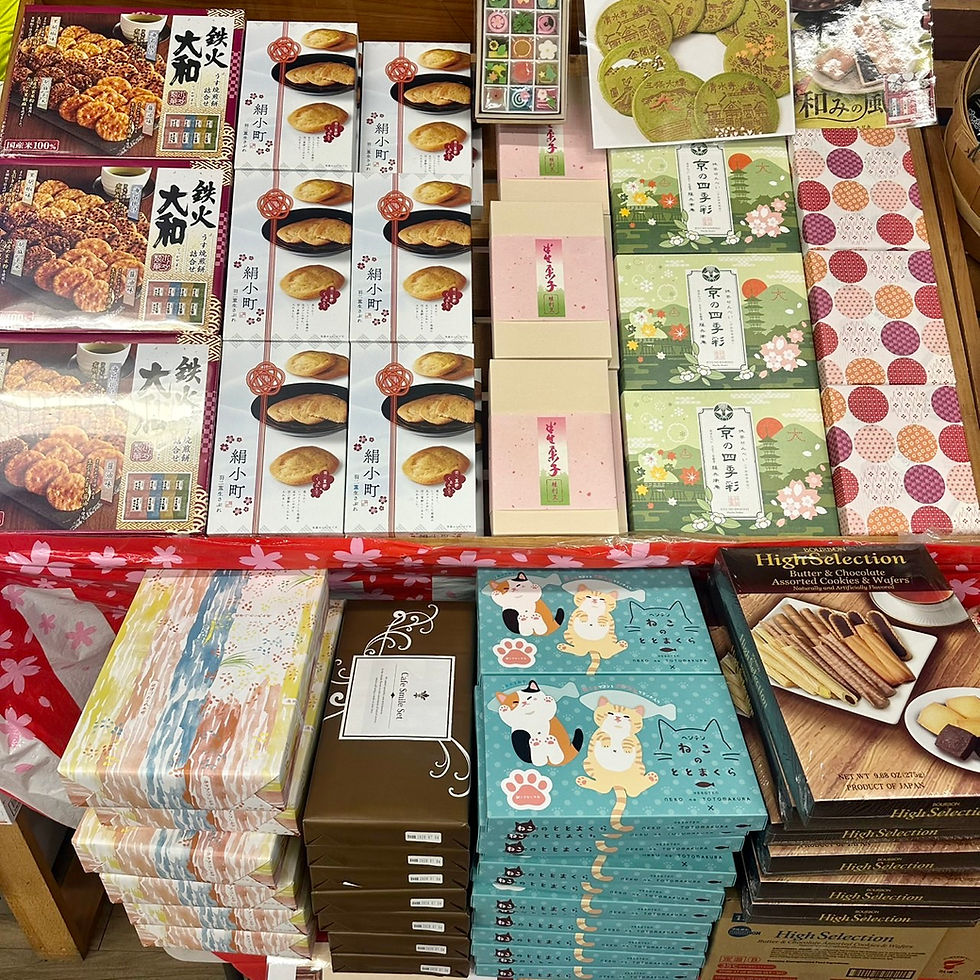Seasonal Eats: Foods for Winter
- Spratty Lin
- Oct 9, 2020
- 3 min read
Updated: Nov 30, 2020

Days grow shorter and the air grows colder as winter approaches. In Japan, the seasonal shift means a new showcase of seasonal food. As a compliment to the cold weather, simmered dishes take center stage. Piping hot broth from nabe and oden, perfectly tender meat and potatoes in niku jaga, and even a sweet, soup-like dessert made of mochi and red beans called zenzai are staples of Japanese winter cuisine. The following five foods are favorites among Japanese people during the colder parts of the year.
Oden
Oden is a delicious dish made with fish cakes, chunks of vegetables and konnyaku all simmered together in a soy-sauce based broth. When eaten, the solid pieces are fished out of the broth and served piping hot, sometimes with a small amount of karashi mustard as a garnish. There is some variability to ingredients, but popular ones, aside from those already mentioned, include daikon radish pieces, lotus root chunks, strips of konbu tied into bows, hard boiled eggs, and miniature cabbage rolls. For a basic intro to oden, try one of our oden sets from the frozen foods section!
Nabe
Nabe, which translates simply to “pot” refers to an entire class of hot-pot style dishes usually enjoyed during the winter. Nabe is somewhat similar to oden in concept-- ingredients are simmered together in a broth, and then fished out and eaten while they are still hot. In contrast to nabe, though are the choices of ingredients. While oden focuses mostly on proteins in the form of fish cakes, nabe features a much larger variety of components. Plant based ingredients, like mushrooms, carrots, onions, tofu, and leafy greens comprise much of what goes into a standard pot of nabe. Proteins are typically less processed in nabe than in oden, and can take the form of crab legs, whole shrimp, sliced fish, chicken, or beef.
Zenzai
Sometimes also called oshiruko, zenzai is a sweet dessert soup made by boiling red azuki beans with sugar and salt. It can be made either chunky, with whole beans still intact, or smooth, where the beans have been reduced to paste before preparation. Zenzai is served with a piece of mochi floating in the center, adding a delightful chewy contrast in texture to the soup. Eaten hot, zenzai is an ideal winter treat-- sweet enough to curb those winter sugar cravings, but with a temperature that keeps you warm from the inside.
Nikujaga
Modeled after beef stew, this Japanese interpretation offers a wonderful combination of simmered potato chunks, carrot pieces, green beans, shirataki noodles and thinly sliced beef (at Maido, we use gyudon meat) in a sweet and savory soy sauce broth. Nikujaga is often served as a complement to other dishes, as a side or as one of the different components to a bento box. Its hearty flavor is a special kind of comforting, and perfect for a cold day.
Yakiimo
A simple favorite, yakiimo, or baked sweet potatoes, are exceedingly popular in wintertime Japan. Coming onto the culinary scene during the fall, yakiimo remains a cornerstone of Japanese snacking until the weather starts warming again in the spring. Yakiimo are baked slowly and at a low temperature so that the natural starches present turn to sugars. This results in a velvety soft, surprisingly sweet potato that is not only tasty, but healthy as well.
With so many tasty, warming dishes to choose from, winter is the perfect time to eat in Japan. Seasonal ingredients for the coming winter are already rolling into stock here at Maido. Oden sets are back, along with daikon radishes and ceramic earthenware nabe pots. Stay tuned for product announcements as our inventory shifts and bring tasty, wintertime Japanese food to your own kitchen!




Comments